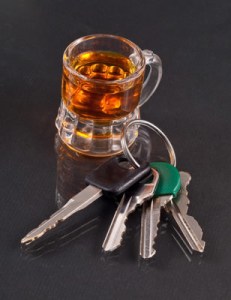 We here at TAM® of Nevada like to promote alcohol awareness and responsible drinking year round. However, we’re happy to help spread the message that April is Alcohol Awareness Month. This is an opportunity to raise awareness of alcohol abuse and encourage people to make healthy, safe life choices, as well as to highlight the role that servers and sellers have in protecting their communities. Good judgment and knowledge of the Techniques of Alcohol Management (TAM)® are crucial qualities in a service professional; and Alcohol Awareness Month is an opportunity for you to showcase your training!
We here at TAM® of Nevada like to promote alcohol awareness and responsible drinking year round. However, we’re happy to help spread the message that April is Alcohol Awareness Month. This is an opportunity to raise awareness of alcohol abuse and encourage people to make healthy, safe life choices, as well as to highlight the role that servers and sellers have in protecting their communities. Good judgment and knowledge of the Techniques of Alcohol Management (TAM)® are crucial qualities in a service professional; and Alcohol Awareness Month is an opportunity for you to showcase your training!
This month, we encourage you to take this time to educate yourself, your bar patrons, and your loved ones about the dangers of alcohol abuse. In Nevada alone, of the 257 traffic fatalities in 2010, 69 of them, or 27%, involved alcohol-impaired driving (NHTSA). This is an unacceptable number, but you can help make a difference, and possibly save lives, by practicing responsible beverage service. Bartenders, waiters and anyone else who serves alcoholic beverages have a legal and moral responsibility to serve alcohol responsibly, keep a close eye on their patrons, and promote an alternative means of getting home if anyone appears intoxicated. For tips on what you can do to reduce the chance your patrons will be involved in impaired-driving accidents, read our blog post, “DUI-Related Traffic Deaths Up This Year in Southern Nevada – Are You Doing All You Can to Help Prevent Drunk Driving?”
Remember that the goal of Alcohol Awareness Month is to not only increase public awareness, and work to reduce impaired driving, but to also aim at reducing the stigma that too often prevents individuals and families from seeking help if they have a drinking problem. One should never be afraid to ask for the help they need. One can ask for help from a friend, family member or doctor if necessary.
This month, reflect on your own habits and those of your patrons. Do you recognize the signs of alcohol abuse and binge drinking in yourself or others? If you are drinking too much, you can improve your health by cutting back or quitting. Keep track of how much you drink, avoid places where overdrinking occurs, and find new ways to deal with stress. If you are concerned about someone else’s drinking, offer to help. In fact, many drinkers are not aware that they are misusing or abusing alcohol. According to the National Institute on Alcohol Abuse and Alcoholism, drinking more than 4 drinks on any day or more than 14 drinks per week for men, or more than 3 drinks on any day or more than 7 drinks per week for women is considered “at-risk” or “heavy” drinking (NIAAA).
How will you promote safe choices and alcohol awareness this month?
Resources
- State Motor Vehicle Fatalities, 2010 – National Highway Traffic Safety Administration
- Rethinking Drinking, Alcohol and Your Health – National Institute on Alcohol Abuse and Alcoholism
© 2012 National Hospitality Institute®, TAM® of Nevada

 It is tough times for many Americans in today’s economy, and some people are feeling the financial strain heading in to the holiday season. And, a recent study from researchers at the State University of New York at Albany,
It is tough times for many Americans in today’s economy, and some people are feeling the financial strain heading in to the holiday season. And, a recent study from researchers at the State University of New York at Albany,  Every 30 minutes someone dies in an alcohol-related crash. And, did you know? Alcohol is a factor in 6% of all traffic crashes, and over 40% of all fatal crashes (
Every 30 minutes someone dies in an alcohol-related crash. And, did you know? Alcohol is a factor in 6% of all traffic crashes, and over 40% of all fatal crashes ( The ban on caffeinated alcoholic beverages, also called alcopop, was one of the biggest stories in the beverage service and sales industry in 2010. Popular beverages such as Four Loko were called dangerous, a binge in a can, and worse. Last November the Food and Drug Administration declared alcoholic energy drinks to be a public health concern. The FDA concluded that caffeine added to malt alcoholic beverages was an unsafe food additive (
The ban on caffeinated alcoholic beverages, also called alcopop, was one of the biggest stories in the beverage service and sales industry in 2010. Popular beverages such as Four Loko were called dangerous, a binge in a can, and worse. Last November the Food and Drug Administration declared alcoholic energy drinks to be a public health concern. The FDA concluded that caffeine added to malt alcoholic beverages was an unsafe food additive (